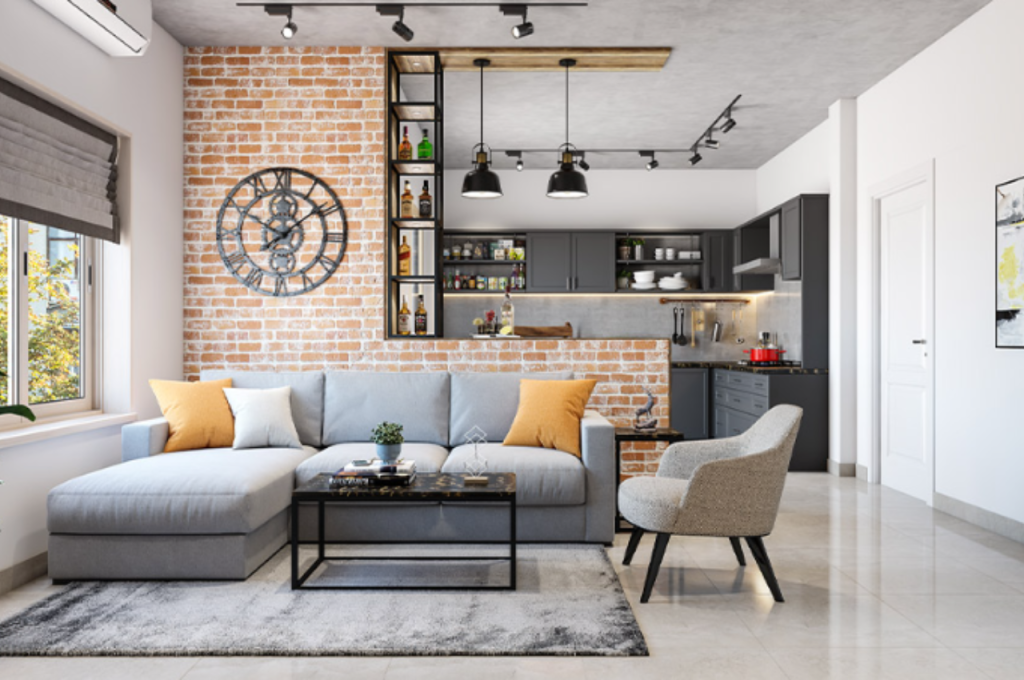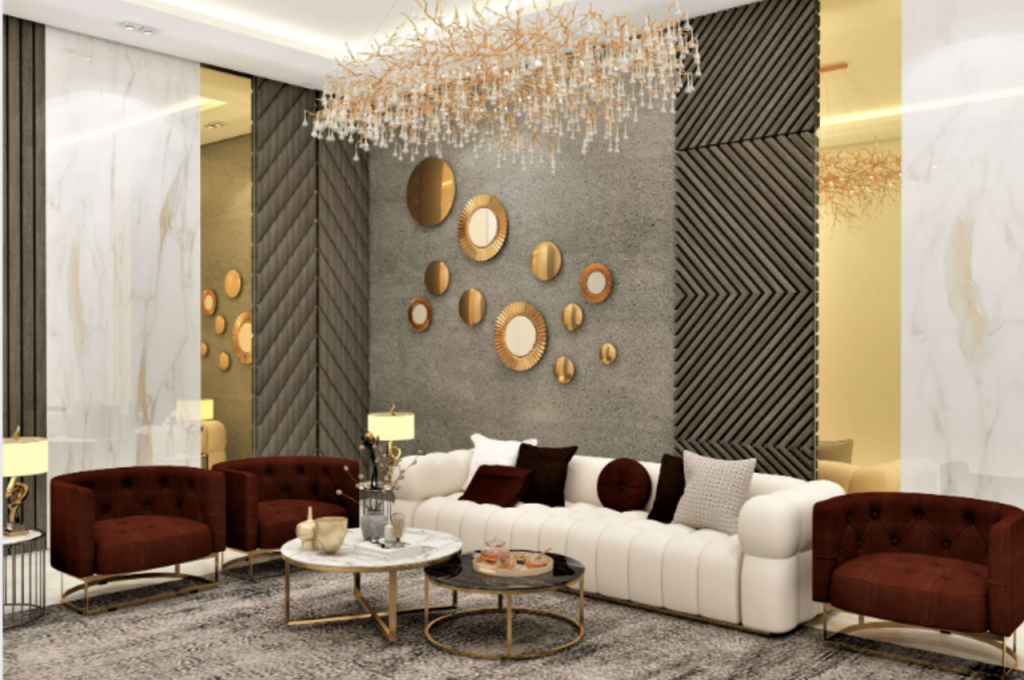Home decor is expensive due to the high-quality materials and craftsmanship involved. Factors such as branding and exclusivity also contribute to the cost.
Home decor items are often made from luxurious materials and require skilled artisans, leading to a higher price tag. Moreover, brands often leverage their reputation and exclusivity to justify premium pricing. As a result, consumers are willing to pay more for the unique and high-quality home decor products they desire.
The combination of superior materials, skilled workmanship, and exclusive branding results in the overall expensive nature of home decor items. Whether it’s designer furniture, handcrafted rugs, or bespoke lighting fixtures, the cost of home decor reflects the craftsmanship and exclusivity that goes into creating these products.
The Impact of Trends on Pricing
Home decor prices are often a topic of frustration for consumers, leading many to wonder why the cost of home decor items can be so high. The reality is that trends play a significant role in the pricing of home decor products. Influencing factors such as popular styles and seasonal trends can lead to fluctuations in pricing that directly impact consumers’ wallets.

Influence of Popular Styles
The influence of popular styles on home decor pricing is substantial. Trends such as mid-century modern or farmhouse chic can drive up the demand for specific items, leading to higher prices as suppliers capitalize on the trend. The popularity of certain styles often leads to an increase in production, which, in turn, can drive up costs for manufacturers. As a result, consumers end up paying a premium for items that are deemed “on trend” in the world of home decor.
Seasonal Trends and Price Fluctuations
Seasonal trends also have a profound impact on the pricing of home decor items. Fluctuations in pricing occur as new collections are released to coincide with different seasons and holidays. This can lead to inflated prices, especially around peak home decor shopping periods like the festive season or spring cleaning. Additionally, the need for seasonal items such as holiday-themed decor can create a spike in demand, allowing suppliers to set higher prices due to the urgency of the consumer’s desires.
Materials and Production Costs
Home decor items can often come with hefty price tags, and a significant portion of the cost can be attributed to the materials used and the production process. Understanding the factors that contribute to the expense can shed light on why home decor is often perceived as expensive.
Quality of Materials Used
The quality of materials used in home decor items significantly impacts their pricing. High-quality materials, such as genuine hardwood, marble, and fine fabrics, come with a higher price tag due to their durability and luxurious appeal. Moreover, sourcing eco-friendly and sustainable materials often involves higher costs, affecting the overall pricing of home decor products.
Labor Costs and Craftsmanship
Another crucial aspect contributing to the expense of home decor is labor costs and craftsmanship. Skilled craftsmanship and labor-intensive processes are necessary to create intricately designed items, contributing to their elevated pricing. Furthermore, handcrafted pieces often involve a significant investment of time and expertise, warranting higher costs.
Brand Perception and Pricing Strategies
In the world of home decor, brand perception plays a significant role in shaping consumer behavior and pricing strategies. Brands leverage their reputation, image, and perceived value to justify higher price points and differentiate themselves from competitors. In this blog post, we’ll explore the influence of brand perception on pricing strategies in the home decor industry and how it impacts consumer decisions.
Role of Brand Reputation
A brand’s reputation affects how consumers perceive the value of home decor products.
Well-known brands can command higher prices due to their established reputation.
Luxury Pricing Strategies
Luxury home decor brands often use premium pricing strategies to create an air of exclusivity.
This pricing tactic relies on the idea that higher prices equate to higher quality and desirability.
Retail Markup and Profit Margins
When it comes to home decor, many people wonder why the prices are often so high. One of the main factors contributing to the expensive nature of home decor is the retail markup and profit margins. Understanding how these factors come into play can shed light on why home decor often carries a hefty price tag.
Understanding Retail Markup
The concept of retail markup refers to the difference between the price at which a retailer purchases a product from a manufacturer or supplier and the price at which it is sold to the customer. This markup is added to cover various expenses, such as operating costs, overheads, and employee salaries, while also allowing the retailer to make a profit. However, the extent of the retail markup can vary significantly depending on the specific product and retailer.
The markup for home decor items tends to be higher than many other products due to several reasons. First, home decor often involves unique designs and craftsmanship, making it more exclusive and sought after. Retailers can capitalize on this exclusivity by increasing the markup to align with the perceived value of the product.
Second, the size and weight of home decor items may incur higher shipping and handling costs. These additional expenses are factored into the retail markup to ensure that the retailer can cover the logistics involved in getting the product to their store and ultimately to the customer’s doorstep.
Lastly, the demand for home decor can be seasonal, leading to fluctuations in sales throughout the year. To compensate for potential periods of lower demand, retailers may set a higher markup to maintain profitability regardless of the sales volume.
Factors Affecting Profit Margins
In addition to the retail markup, profit margins also play a significant role in the pricing of home decor. Profit margins represent the percentage of the final retail price that the retailer retains as profit after subtracting the costs of purchasing the product and operational expenses.
Several factors can influence the profit margins in the home decor industry. One of these factors is the competition within the market. If the market is saturated with numerous retailers selling similar products, profit margins tend to be lower as retailers compete to attract customers with lower prices.
Another factor affecting profit margins is the cost of raw materials and production. Home decor items often require quality materials and skilled artisans, driving up the manufacturing costs. When these costs are high, retailers need to set higher profit margins to cover their expenses and ensure a satisfactory return on investment.
Furthermore, the brand name and reputation of the retailer can impact profit margins. Well-established and reputable retailers can afford to command higher prices for their home decor products, contributing to higher profit margins.
Lastly, market demand plays a crucial role. If there is high demand for a particular style or trend in home decor, retailers can capitalize on this by setting higher profit margins to maximize their profits.
Customization and Personalization Costs
When it comes to home decor, customization, and personalization are two factors that can significantly increase the cost. Many homeowners prefer to have their homes reflect their unique style and taste, which often requires custom requests and personalized items. However, these additional features come at a price. In this section, we will discuss the impact of custom requests and the additional costs associated with personalization, shedding light on why home decor can be so expensive.

Impact of Custom Requests
Customization allows homeowners to have furniture, fixtures, and other decor items tailored to their specific preferences. While this level of personalization ensures a one-of-a-kind look, it also adds to the overall cost. Custom requests often involve extra steps in the manufacturing process, such as sourcing specific materials or working with skilled artisans. These additional efforts and resources contribute to the higher price tag.
Moreover, meeting unique design requirements may require additional labor and expertise. Furniture pieces that need to fit in unconventional spaces or match existing color schemes perfectly might require skilled craftsmen to produce them. This level of precision and attention to detail increases both the cost of materials and the amount of time and effort needed to complete the custom product.
In addition, custom requests often involve revisions and iterations, especially during the design phase. Ensuring that the final product meets the homeowner’s expectations may require multiple adjustments and modifications, which can lead to increased production costs. The need for specialized machinery or tools to bring the custom design to life also contributes to the overall expenses.
Additional Costs for Personalization
Personalization offers homeowners a chance to put their unique stamp on their home decor items, making them feel more connected and attached to their living space. However, this level of individualization comes with its own set of costs.
One of the primary factors that increase the price of personalized items is the need for specialized equipment and techniques. Laser engraving, embroidery, or hand-painting personalized details requires additional tools and skills, which can drive up the overall expenses. The time and effort put into creating these customized elements add a layer of craftsmanship, resulting in higher price points.
Furthermore, personalization often involves the use of premium materials or higher-quality finishes. Whether it’s choosing a luxurious fabric for personalized upholstery or opting for custom metal accents, these high-end materials come with a premium price tag. The cost of sourcing and utilizing these exclusive materials adds to the overall expense of personalized home decor items.
Market Demand and Supply Chain Dynamics
The high price of home decor can be attributed to market demand and supply chain dynamics. With a constantly evolving market and limited supply, the demand for unique and high-quality home decor items drives up their prices. The intricate supply chain involved in sourcing and delivering these items also adds to the overall cost.
Market demand and supply chain dynamics play a pivotal role in the pricing structure of home decor products.
Demand-supply Imbalance
When supply falls short of demand for specific home decor items, prices naturally surge. Suppliers may struggle to meet the soaring demand, boosting the cost of home decor products.
Supply Chain Disruptions
Natural disasters, such as hurricanes, can disrupt the entire supply chain, leading to increased prices. Supply chain disruptions cause delays in the delivery of raw materials and finished products. Shipping delays due to supply chain disruptions can result in elevated home decor prices. home decor prices can be influenced by market demand and disruptions in the supply chain.
Hidden Costs in Home Decor Pricing
When it comes to purchasing home decor, many consumers are often taken aback by the high prices. However, what most people fail to realize is that there are numerous hidden costs involved in the pricing of home decor items. These costs significantly impact the overall price tag, making home decor appear more expensive than expected. Let’s delve into these hidden costs in more detail.
Shipping and Handling Fees
Home decor pricing isn’t just about the cost of the item itself. Shipping and handling fees also play a significant role in the final price. These fees encompass the expenses associated with packaging, transporting, and delivering the products to the end consumers. Not to mention, shipping fees can vary greatly based on the size, weight, and fragility of the items being shipped.
Overhead and Operational Expenses
Behind every piece of home decor lies overhead and operational expenses that are often overlooked. These encompass a wide array of costs, including rent for brick-and-mortar stores, utilities, insurance, and employee wages. All these expenses contribute to the overall pricing of home decor items, ultimately adding to the financial burden that consumers bear.
Tips for Cost-efficient Home Decor Shopping
When it comes to home decor, many people find the prices to be a significant barrier to creating the perfect space they envision. However, there are ways to shop for home decor cost-effectively without sacrificing style or quality. By employing some savvy strategies, you can make the most of your budget and create a stylish and inviting home.
Comparison Shopping Strategies
Comparison shopping is a key strategy for finding affordable home decor items. Whether you’re shopping online or in-store, comparing prices across different retailers can help you identify the best deals. Make use of price comparison websites and browser extensions to quickly compare prices across various vendors. Tracking prices over time can also help you identify when a particular item is likely to go on sale, allowing you to purchase at the best possible price.
Seeking Quality Alternatives
When looking for quality alternatives, consider shopping at thrift stores, consignment shops, and flea markets. These places often offer unique and high-quality home decor items at a fraction of the cost. Additionally, DIY projects can be an affordable way to create custom decor pieces that fit your style. By upcycling or repurposing existing items, you can save money while adding a personal touch to your home.

Frequently Asked Questions
Sure! Here are some questions about why home decor is so expensive:
1. Why is home decor so expensive?
Home decor can be expensive due to various factors like high-quality materials, intricate designs, skilled craftsmanship, and brand reputation. Additionally, factors like supply and demand, shipping costs, and import taxes also contribute to the overall cost of home decor items.
2. Are there any budget-friendly home decor options?
Yes, there are budget-friendly home decor options available. You can explore thrift stores, online marketplaces, and clearance sales to find affordable home decor items. DIY projects and repurposing existing items can also help save money while adding a personal touch to your home decor.
3. How can I make my home decor more affordable?
To make your home decor more affordable, consider these tips:
1. Set a budget and prioritize your spending. 2. Look for discounts, coupons, and sales. 3. DIY or repurpose existing items. 4. Shop at thrift stores or online marketplaces for affordable options. 5. Consider borrowing or renting decor for special occasions.
Conclusion
Understanding the factors behind expensive home decor enables smarter purchasing decisions. Quality, craftsmanship, and demand all contribute. By being mindful of these aspects, you can navigate the market better and find pieces worth investing in.
Remember, your home should reflect your style and personality, not just the price tag.

